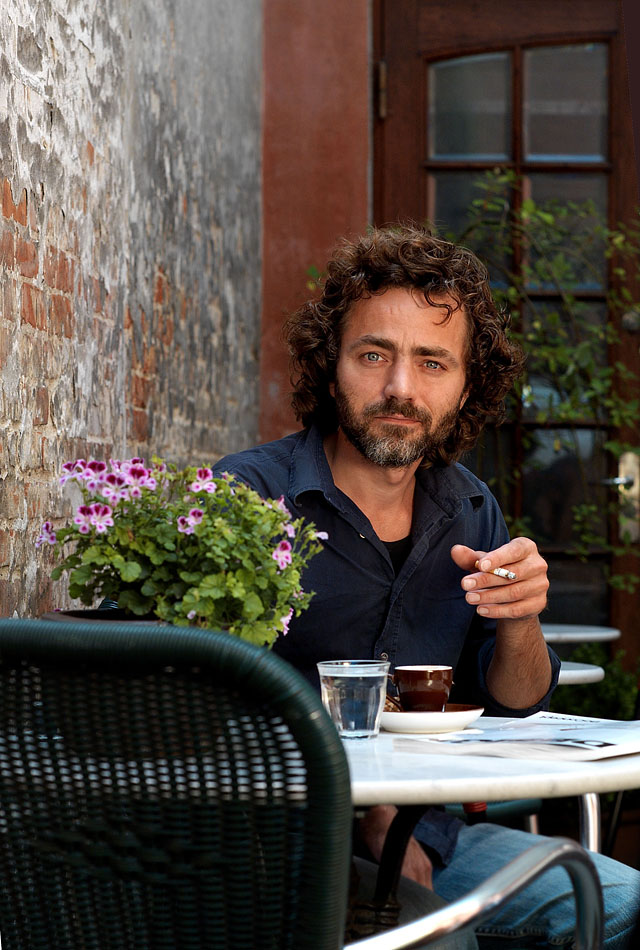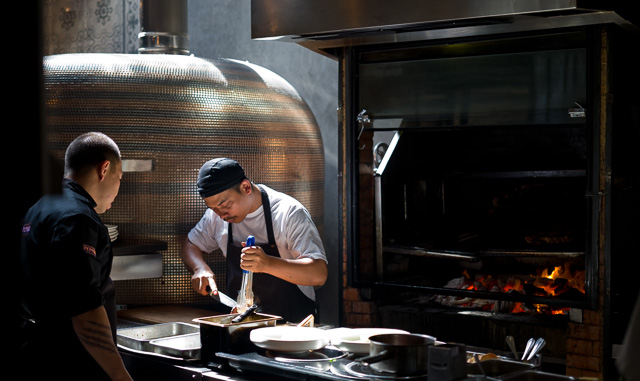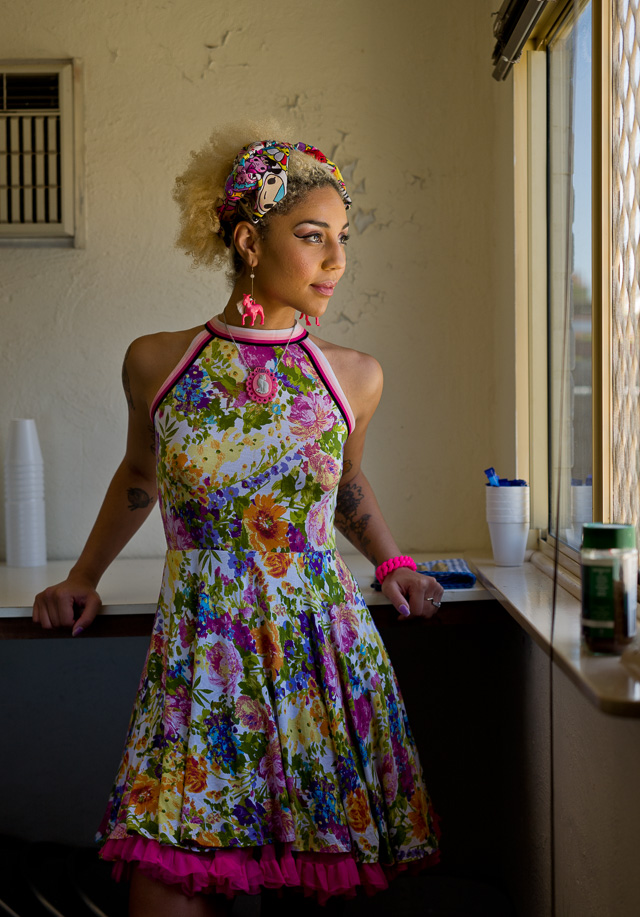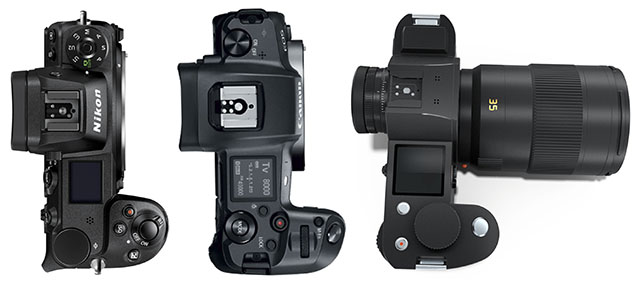By: Thorsten Overgaard. September 24, 2018. Updated November 6, 2019.
Add to Flipboard Magazine.
It’s been said for some years that 'full-frame is the new medium format', referring to the fact that the high resolution the medium format was once known for, has been achieved in smaller sensors today. It’s been no more true than these days where we see a reboot of the traditional 35mm system cameras.
The trend has been that dSLR camera systems die out. Most professionals who used to have a standard setup of two large dSLR cameras around the neck (one with a wide zoom, another with a tele zoom), has been using mirrorless small cameras at any chance they got. They may keep the dSLR cameras, but they only carry them if they absolutely must.
Despite the great quality and portability in small cameras today, I think we’re many who feel an affinity towards “real” big cameras. I get soft in my hearth when I see a 100MP Phase One camera or a 50MP medium format Fujifilm GFX.
I bought one more dSLR camera …
When I was in Portugal earlier this year, I wandered about in the Leica Store Porto, and on their second-hand shelfs they had a complete Leica R9 with the 10MP digital back that was released in 2004.
I looked at it, and then I asked to buy it. The whole transaction took less than five minutes, and then I had two of these great systems.
Except, when I got back home to the studio and placed the ‘new’ DMR next to the one I used a lot for several years, I realized I would likely never really use them.
Why did I buy one more? I simply bought it because it was like meeting an old friend. I got emotional. I had to have it, just because we belong together. Yes, I took it out for a few hours a couple of times, and it made absolutely no sense using this camera again. The digital Leica M10 does it with much less trouble, and it’s compact and charming too.
Intuitively I know I’m not done with big cameras. I just haven’t found the right one. But I feel I’m close.
Don't tell me you don't miss the time where we took great care to make a single photo. I know people who spent 2-3 days to set up a photo and capture it with a Sinar 4x5". The result was one single dia-positive. No photoshopping or anything. That was the final frame.

Thomas Sigfred portrait. Leica R9/DMR with 80mm f/1.4 @ f/5.6, 200 ISO.
The Leica SL
The Leica SL was an odd move when Leica Camera AG released it a few years ago. At a time when everybody agree dSLR is in the past and was moving towards mirrorless, smartphones and video, Leica reinvented the dSLR in a mirrorless edition.
I recently had a talk with lens designer Peter Karbe on where the lens design goes from here (which I will return to in a later article), but in short all the new Leica lenses are geared not only to capture perfect imagery in terms of colors, contrast, micro-details and three-dimensional perception, they are also optimized for sensor sizes way beyond 100MP.
As it turns out, Leica Camera AG invented a new camera concept which allow for a reboot of the camera market. Once again we will buy new cameras, buy into a new lens system and all that.
I say that with joy, because nothing was better than reading photo magazines in the 1970's and 1980's and dream of SLR cameras and lenses.

Restaurant Peppina, Bangkok, Thailand, December 2015. Leica SL 601 with Leica 50mm APO-Summicron-M ASPH f/2.0. 400 ISO at f/2.0, 1/4000 second. © 2015-2018 Thorsten Overgaard.
The Leica SL and the 50mm APO
The Leica SL sensor is something special, and that is for both video and still photography. It’s different than the Leica M sensor, which is already obvious in the first Leica SL Typ 601 with 24MP sensor.
You will notice if you put on Leica S lenses, as well as Leitz Cine lenses. But mainly you will notice if you put on the Leica 50mm APO-Summicron-M ASPH f/2.0 lens. This is a lens that Peter Karbe dreamt about making for years, and when he was finally allowed to bring it to the final stages so it could go into production, we likely got the first taste of what he sees of possibilities in optimizing lens design to perfection.
The Leica 50mm APO-Summicron-M ASPH f/2.0 simply brings out something on the 24MP sensor of the Leica SL that you don’t see on the Leica M. It’s tiny, but it’s there.
The next trend in lens design is to use big glass, and the Leica SL system was designed to give the lens designers plenty of space to make big optics; which obviously is so much easier than cramping perfection into a tiny lens as the 50mm APO.
There’s also a lot of production know-how in the Leica SL system, meaning that the parts used, and the production line is of a new century, and thus very different than the hand-made Leica M lenses where each lens is an artisan project.
 Leica SL with Leica 50mm APO-Summicron-M ASPH f/2.0. © Thorsten Overgaard.
Leica SL with Leica 50mm APO-Summicron-M ASPH f/2.0. © Thorsten Overgaard.
Nikon got it, they want to be Leica
In the weeks up to the Photokina (that begins on September 26), camera news has been released almost every day. In the past it was all kept under the wraps till Photokina opened, but now all brands release their news beforehand.
I couldn't help notice the new Nikon Z whifor ch for me says with large letters that Leica got it right with the Leica SL. It's Who would have predicted 15 years ago when Leica was releasing their first digital cameras that they would one day be the brand other camera manufacturers wants to be? Nikon is even planning on releasing a 58mm Nokti f/0.95 lens for the Nikon Z. It will be the crown jewel of the Z lenses, and it will have manual focusing. Just like "our" Leica 50mm Noctilux f/0.95 that Leica released in 2008.
Leica is in a sweet spot with all systems thought out to offer simplicity and high quality - and they all sell well (including the Leica S which will also soon be updated).
Another brand I also follow with some interest is Phase One who just released their 151MP camera sensor ($54,990 for monochromatic IQ4 camera and $51,990 for the color version). As you may recall, I compared the Leica M10 and the Phase One 100MP in my Leica 75mm Noctilux article.

Nikon Z, Canon R and Leica SL follow the same philosophy as Leica made for the Leica SL in 2015. Mirrorless with large opening to the optics, new lens designs and adapters to use older lenses.
Canon too ... with Sony and Fuji coming soon
Canon also launched their mirrorless version of this, the Canon R, and they included a 50mm f/1.2 lens in it as well as a low-light zoom (28-70mm f/2.0). The trick with the new system is the low-light lensese. If you want those lenses, you have to get the new camera and new lenses. Just as the Leica SL and the Nikon Z, all previous lenses fits the camera via an adapter. Sony and Fuji is likely up next to follow this trend.
The Leica family tree
Nobody could have predicted, when the Leica SL was introduced, that it would in fact become such a success that it may very well have set the standard for a new spring for the photo industry.
More megapixels doesn't make any sense – unless you can actually see more. Which is the prospect of an entire new era of lens design.
I hope you enjoyed today's Story Behind That Picture and this teaser. As always, feel free to e-mail me with questions, ideas and suggestions.
![]()
